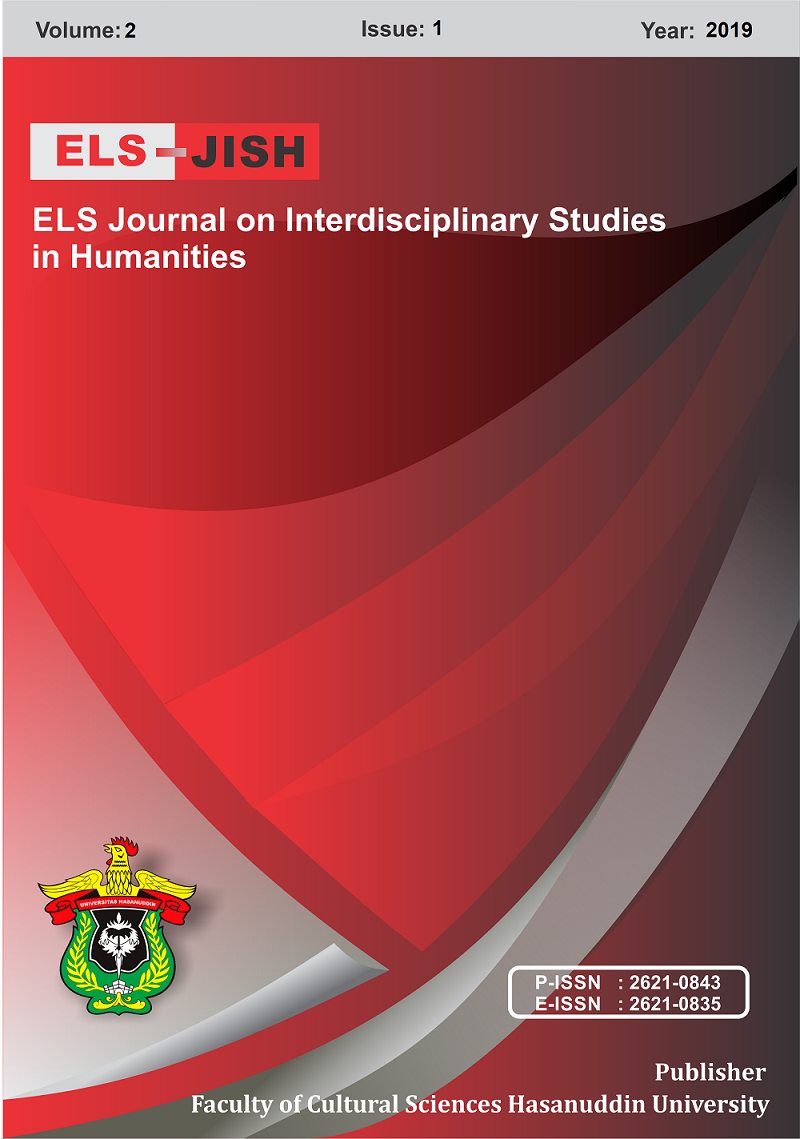Dixon’s Sit Subtype Of Rest Verbs In English and Buginese
DOI:
https://doi.org/10.34050/els-jish.v1i1.4193Keywords:
Rest Verbs, Semantic Types Of Verb, Preposition, Locus, CultureAbstract
Sit Subtype refers to a stance of resting, some verbs specification of Locus is obligator and other it is optional. The aims of this research were (1) To identify Rest verbs in English and Buginese based on the Sit subtypes divided by Dixon. (2) To investigate the differences and similarities in terms of semantical and grammatical construction of Sit subtypes of Rest verbs in English and Buginese. English data were collected from Corpus of Contemporary American English (COCA), while data of Buginese were obtained from field research through process of observation and in depth interview. Both of the data were analyzed with description and qualitative analysis.The result of this research shows that (1) There are nine rest verbs of Sit subtype in English, they are sit (down), stand (up), lie (down), kneel, crouch, squat, lean, hang (down), and float, while in Buginese, there nineteen of Sit subtype: ttudang, ccado’, sEppo’, massampiang, massulekka, makkaddao uttu, mattulak sadang, mappasilojo’, mappalempu, tettong, llEu, maggalelu, mattojang, makkaluttu, ccuku’, rroko’, maccekkeng, ssanrE’, maggattung, and mmawang. (2) The main differences of rest verbs in English and Buginese based on Sit subtype can be seen from two aspects, clause structure and a stance of resting. From clause structure, In English a NP is followed by VP, while in Buginese is permissible that VP is followed by NP that marked by suffix –I in VP. From a stance of resting aspect, cultural background plays important role determining the variants of the rest verb.Downloads
Download data is not yet available.
Downloads
Published
2018-05-26
How to Cite
Hartari, A. R. (2018). Dixon’s Sit Subtype Of Rest Verbs In English and Buginese. ELS Journal on Interdisciplinary Studies in Humanities, 1(1), 21-27. https://doi.org/10.34050/els-jish.v1i1.4193
Issue
Section
Articles

















